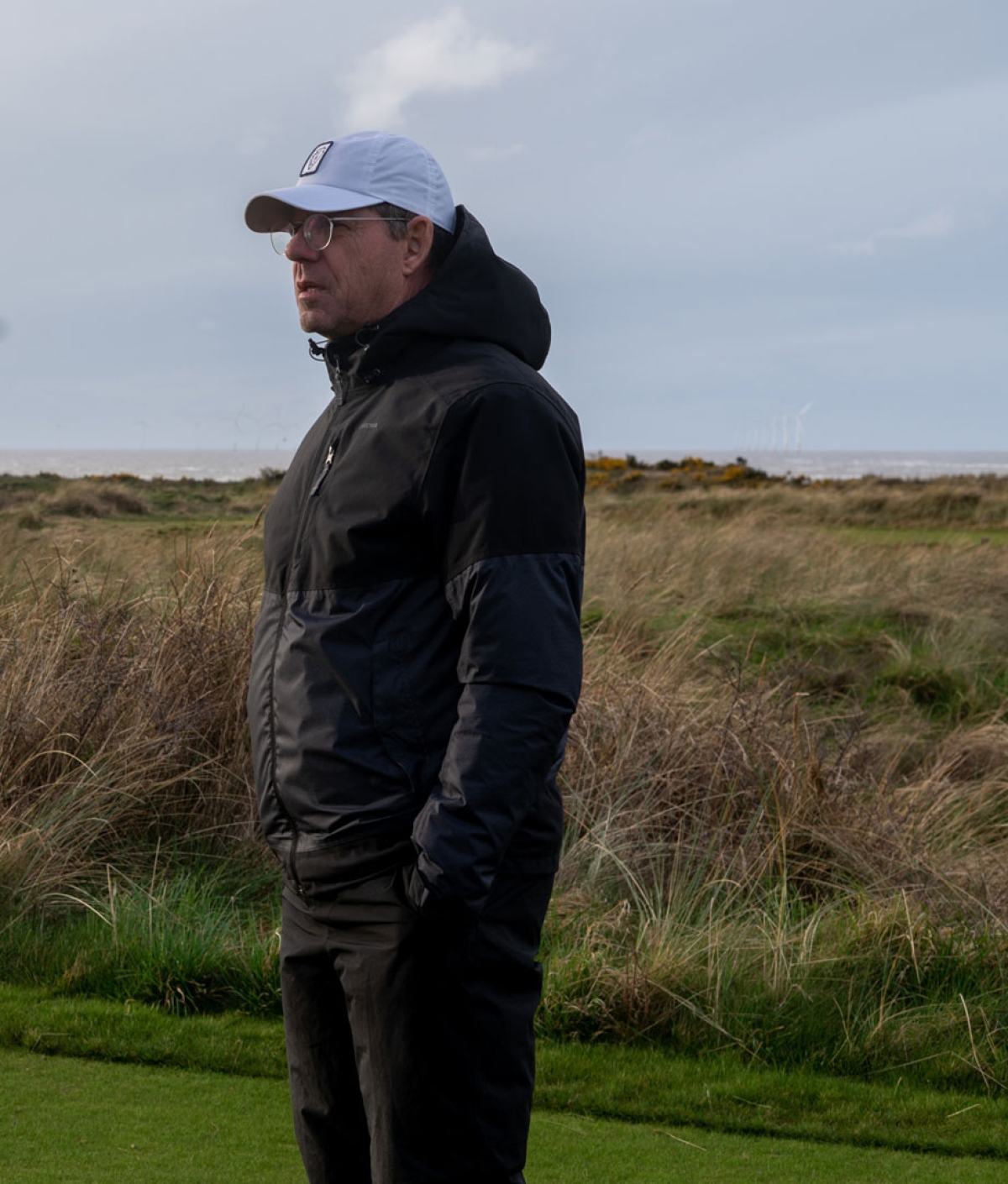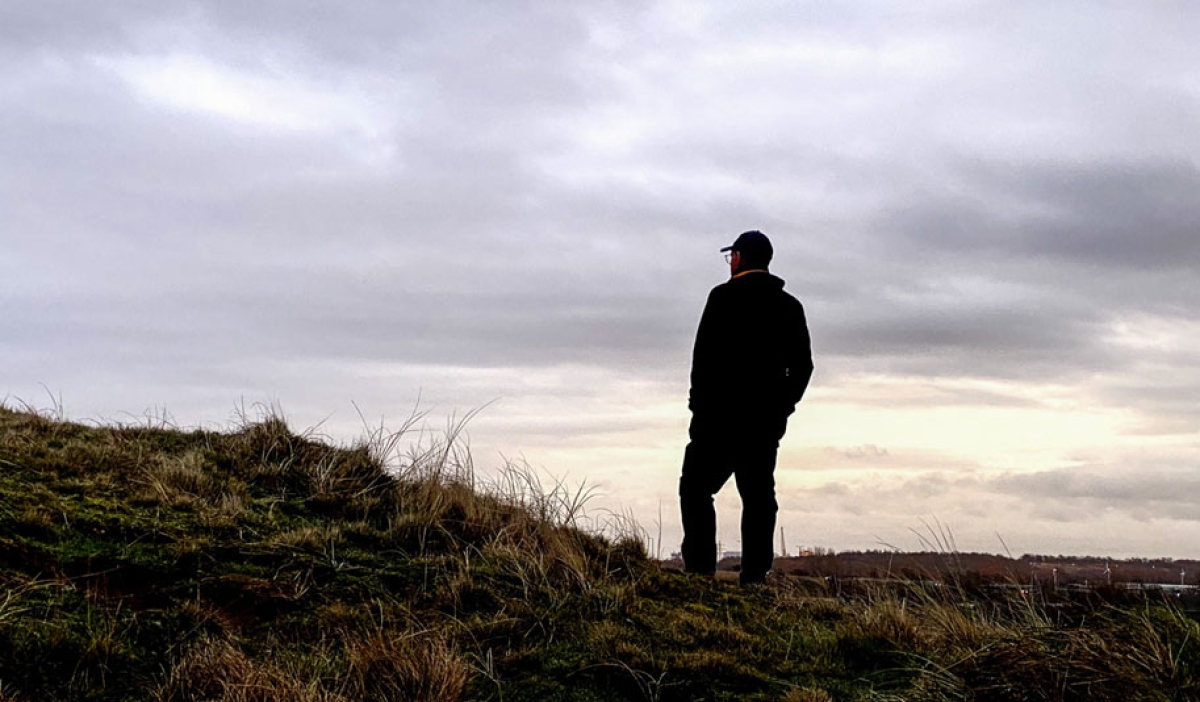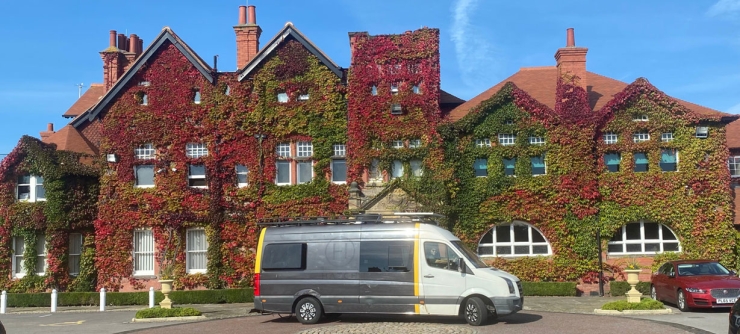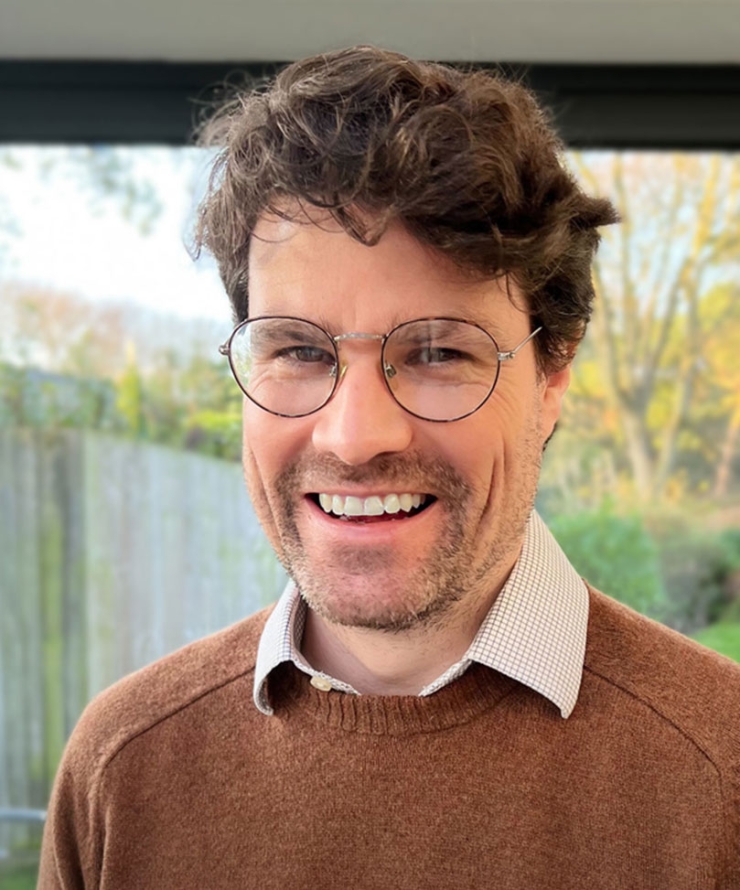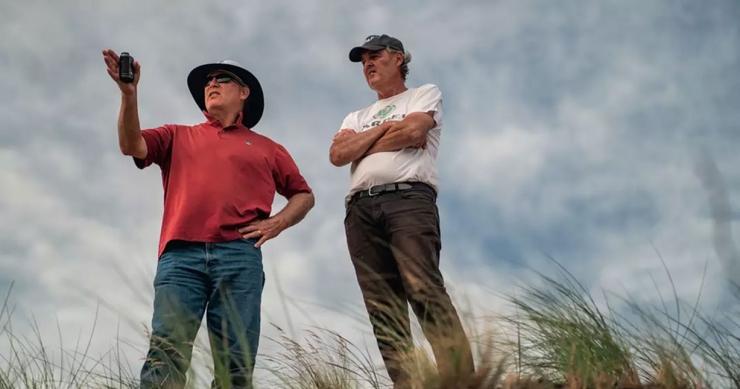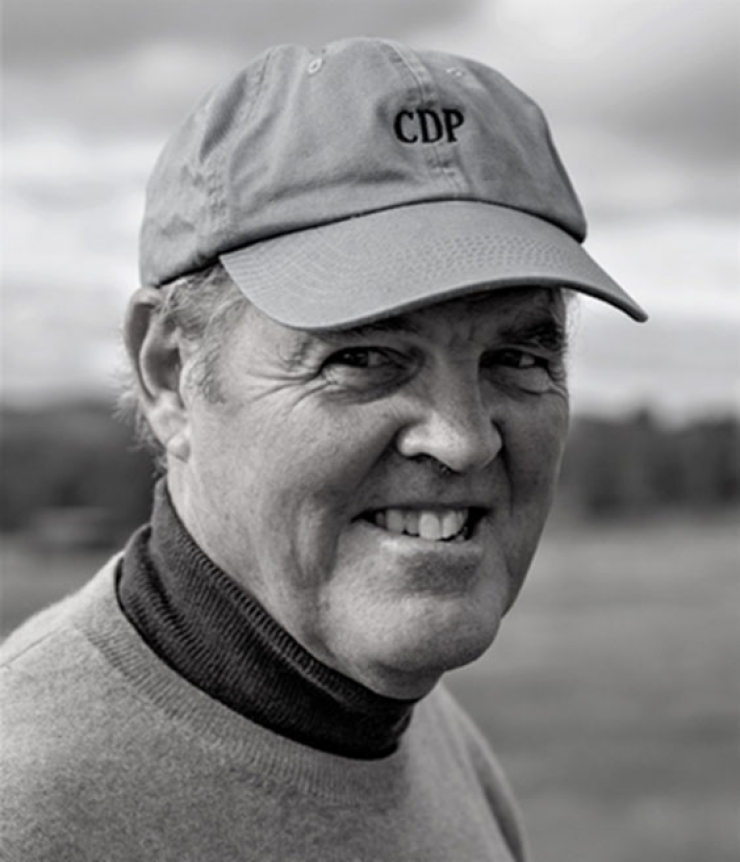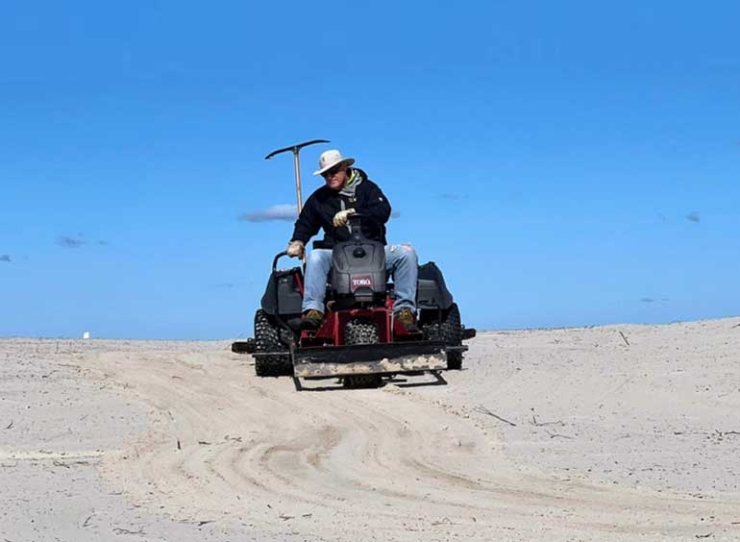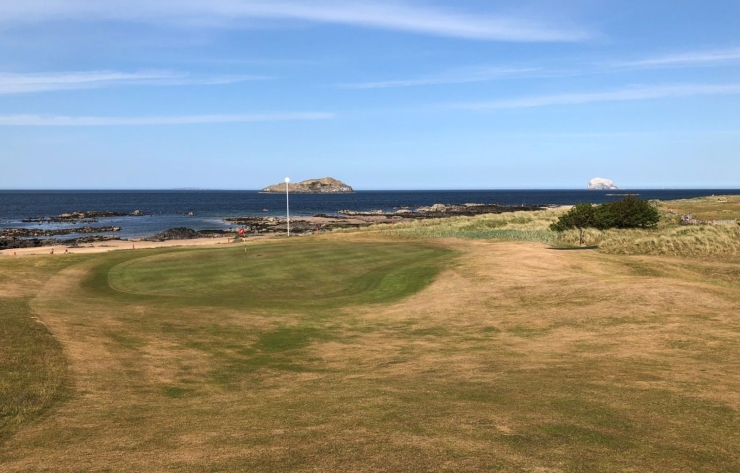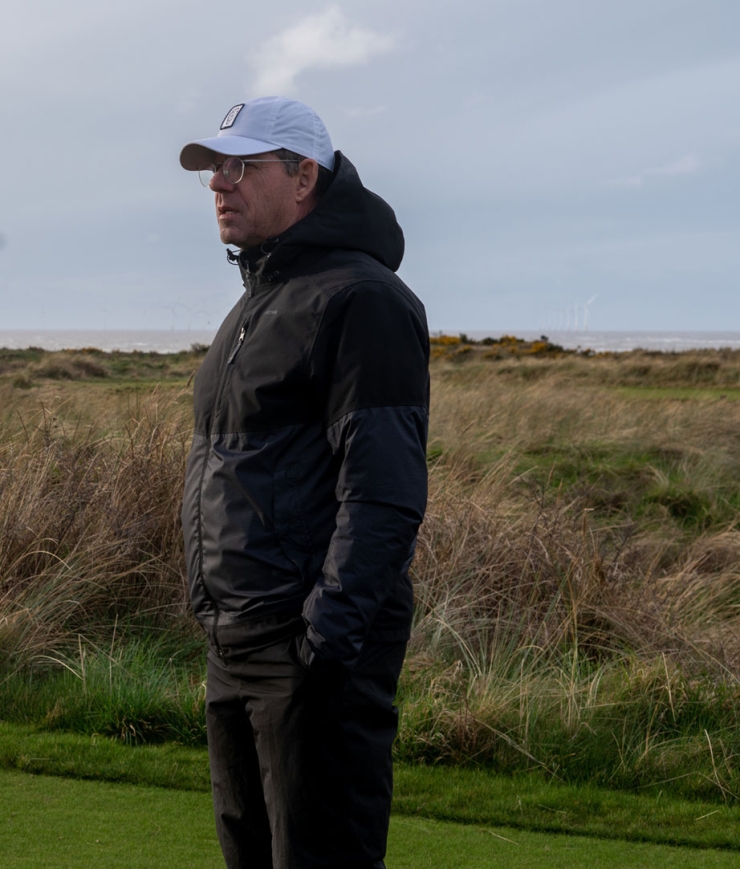20 November 2019
The Restoration Man
Frank Pont is one of the best known restorers of classic age courses in Europe.
We asked him for an overview of his career to date as well as some thoughts on his favourite architect.
Frank, please introduce yourself and give a little background.
I studied in Delft as a civil engineer - mechanics and steel structures. My first job was working for Shell building offshore platforms in the North Sea. I soon realised that I didn’t want to do that for the rest of my life, so I applied to several American business schools. I was lucky enough to be accepted by the University of Chicago. After my studies there, I became a strategy consultant for McKinsey and later Monitor Company. I lasted about 5 or so years in that industry.
It was then that I got a call from a headhunter in London asking whether I wanted to be an investment banker. When I said no, they told me that that was a shame as it paid me three times my present salary. That got my attention!
So I found myself in the world of investment banking. I rose to Global Head of Telecoms within Deutsche Bank’s investment banking division.
By that time I was making 250 flights a year, which takes a toll. It’s not good for your physical or your mental health. This was one of the key reasons why I decided I wanted to do something else. Something creative.
I came across a 2-year degree course in Golf Course Architecture at Heriot Watt University. I'd always had a passion for golf. I grew up near Harry Colt's Eindhovensche Golf. It immediately caught my attention. I applied and was accepted. As part of the course, I served an apprenticeship with David McLay-Kidd.
For those who don’t know, who is David and how did that come about?
David is a Scottish architect who is usually based in the States. He had a rapid rise to fame triggered by his designing of Bandon Dunes for Mike Keiser as a 27-year-old back in 1998/99. Since then, he’s built a raft of new courses around the world. I think I appealed to David for two reasons. First, we were both members of Machrihanish.
Second, I had extensive experience in doing deals. He'd recently agreed to build a new golf course in Hawaii for Charles Schwab and George Roberts. His proposition was simple. Help me with that - the fees, the structure, the legalities - and you can be my apprentice.
I started by working on Powerscourt in Ireland, then a year later at Nanea in Hawaii. Once I’d finished my studies, rather than stay with David, I decided I should set up my own practice. David’s activities were global and a big part of the reason for quitting banking had been to reduce my traveling. I wanted to be based in The Netherlands, start a family and get on with life.
What was it like setting up a firm from scratch?
It was tough. Getting business, winning round clubs – it’s a challenging industry to break into. The great opportunity I had in those early days was that The Netherlands had eight courses that had been designed by Harry Colt and his colleagues. Crucially, none of them were being looked after as well as they should.
They were great to me. Eindhovensche, my home club, encouraged me to help with their plans. Being a small country, six of the others then took note and also reached out.
Royal Hague was your breakthrough moment?
Yes. Royal Hague, a superb Colt design in the Dutch dunes, chose me to help them restore and rebuild their greens. They had big agronomical problems with them, so rebuilding was the only option. Early on we made the decision to exactly replicate the 13 original greens. The challenge was in redesigning the 5 greens that had been changed over the years so that they were indistinguishable from the originals. I am proud that visitors have a hard time recognising the ones I designed from Colt's. I do believe it is an important job of a restoring architect to leave your ego at the door. I always try and respect the original architect's design intent and style.
The project was an enormous success. Royal Hague has held the top spot in The Netherlands ever since and now sits as one of three European courses in most publications' world top 100. It had never held such a position before.
It led to further projects at the likes of Hardelot, De Pan and Le Touquet. We've been successful in achieving dramatic elevations in peer rankings. It isn't the be all and end all, but it can be important to the clubs.
Talk about Tandridge. That had massive ranking success, but you're no longer involved. What happened?
A few years later, Peter Lord (author of 'Creating Classics; The Golf Courses of Harry Colt') put me in touch with Tandridge. They’d asked him for advice on who to speak to with a specialist interest in Colt, and he pointed them to me.
Tandridge actually reached out whilst I was dropping my kids off at a party. I thought it must have been a wind up from one of my friends. But it was real, and after a lengthy interviewing process with several prominent architects, they offered me the job.
Colt built Tandridge in 1924 – right in the middle of the ‘Roaring Twenties’. He wasn’t known for heavily bunkering courses but this was an exception. Perhaps a reflection on that decade of excess, there were over 300 bunkers in the original design. Unfortunately, records of how the course evolved over the early years were lost during a clubhouse fire in 1927.
We debated long and hard the right number to bring back as, by 2009, only 79 of them remained. They were, though, the defining feature of the original design. In the end, after detailed consultation with the Green Committee, the Board, and the Course Manager, we decided to bring back about 20. This was going to be one of the first places in the UK to restore the original Colt style of bunkers, more rugged.
The whole project lifted the stature of Tandridge enormously. Originally, it was well outside the England Top 100 but jumped from about 130 to 70 by the time we'd finished. It even made it into the GB&I top 100.
Unfortunately, the Course Manager I'd closely worked with left after a few years. His successor wasn't confident maintaining around 100 bunkers with a staff of 12. To try and reduce the maintenance load, we began a process of installing rubber crumb liners - a new technology at that time.
The club's new board decided a fresh approach would be better and they elected to appoint a new architect. It was disappointing as we'd achieved so much. But I'm proud the club has reasserted itself as one of the better courses in Surrey. Almost all of the bunkers we reinstated are still there and the rubber crumb in all of them. It's a wonderful course.
Why did you decide to focus on restoration projects rather than new build?
Largely for the same reason I didn’t want to go into business with David Kidd – travel. New build courses are high margin but require a lot of time on site. Being away weeks at a time is difficult when you have a family with small children.
Now, I’m fortunate to be working with one of the best design and build architects in the world in Mike DeVries. We develop the strategies and designs together and then he sculpts them into the ground. He's a true craftsman.
Similarly, Mike Clayton is one of the most diverse architects of the last 30 years. From playing and caddying at the very highest level, Clayts has refurbished half of the Melbourne Sandbelt. He's also designed world top 100 courses. Seven Mile Beach will be outstanding, and the courses we are currently building in Vietnam allow me to pursue this side of architecture with him.
But back then, I wanted to focus on restoration.
I managed to carve out a niche as the leading restorer of classic era courses across Continental Europe. Colt, Simpson, Fowler. They have similar philosophies but different styles. Restoring and refurbishing their courses and those of their contemporaries gives me enormous pleasure.
I went to great lengths to truly understand their design objectives. Trying to produce an end product that looked free of intervention was always the challenge.
Now you've spent time on both styles, which do you prefer? Restoration or new build?
I love them both, for different reasons.
With new builds, it’s about creating a great routing which takes in the best land, doesn’t have long walks between holes and offers as much variety as possible. Getting that right is a three-dimensional jigsaw puzzle and, for me, is the mark of a great architect.
But the skills needed to effectively refurbish classic courses are quite different. You must be able to identify the limiting factors, understand how the course has changed over the years and, more importantly, why it’s changed. Boundaries might have shifted as land was sold or tees moved to compensate for the prodigious distance the ball now flies. Trees or gorse bushes grow so rapidly, and at a compounding rate. The entropy of nature is a powerful phenomenon. Managing the vegetation to allow golfing strategy and good agronomy is also very important.
Working out the problems with the course is only half the battle. Club’s governance structures are often complex. To win over a Green Committee or a larger membership is critical. It’s like a doctor convincing a smoker to quit. He can diagnose the issue, but he can’t cure it by himself. It needs buy in from all parties, all working together and pulling in the same direction. This process is one I learned during my many years in consulting and banking.
I’ve always seen my role being to help educate members on the key issues. It’s my passion, and I look at it all day, every day. They don’t – so the onus is on me to explain why it’s important to make the changes.
It must always make a practical and significant improvement to the course too. I am not in the business of making changes for change’s sake.
Of those classic architects, which would you say excites you most?
I love Fowler and Simpson. But with the Dutch connection, Colt is my real soft spot. He left an impressive legacy of high-quality courses. He built or was at least involved in the construction of about 250-300 courses. I’ve seen almost two thirds of them now.
What has always struck me is Colt’s unerring consistency in how he applied his design principles. He clearly documented them – three books and plenty of articles – so there’s little excuse for not understanding what he was thinking.
He was a serious person and a diligent designer. He worked with the features of the site always making his changes look as natural as possible.
For me, he was one of the best routers of a course and when it comes to types of holes, lengths, directions, and so on, he always aimed for an infinite variety. He wanted players to hit a wide variety of shots, shape the ball both ways, hit different lengths of approaches, approaches of different trajectory – everything. Variety in the way the holes could be played too. Different routes with different challenges for each class of player. The importance Colt placed on variety cannot be overstated.
His aim was always to stimulate the player to play strategically and mentally. Often his greens were strongly defended but, once on them, a two-putt was achievable.
Colt is often credited as one of the first ‘professional’ architects, but did his style evolve and change over his career?
Definitely. Like anyone, he improved and refined his processes. Some of his early work was less refined than his later stuff. On reflection, his peak was actually somewhere in the middle of his career.
Over time, he started working with a broader group of talented people. What you do see is that his earlier work is sometimes a little more crude with primitive shaping. To give an example, some of the backsides of greens will have sudden drop-offs that are very hard to mow. Tyneside, near Newcastle, has this feature. East Devon has it too – really dropping off behind the surface. Those are things that you wouldn't see as much on later courses like De Pan or Portrush.
It could simply be it took time to find his trusted partners. Later on, he was working with Frank Harris. This made it possible for him to spend less time on site than before.
Colt helped define the modern course architect. Before him, Old Tom did his fair share of designs late in the 19th century but Colt brought new ideas. Courses like Rye and Muirfield, which owe a lot to Colt, are places that fly in the face of the traditional out-and-back routing, for example.
Beyond the routing, what should we be looking out for on a Colt course?
Probably something everyone would notice about Colt’s courses is his par 3s. If you imagine a blank canvas of a couple of hundred acres, covered in trees or scrub, where do you start?
Herbert Fowler, another of the greats, would start with the long holes – par 5s and long 4s. These are generally tricky to fit into routings as they must traverse more terrain. Colt would do the opposite and start with par 3s. Find the very best land, the very best features of the land, and build great one-shot holes.
This means that his par 3s stick in your mind though, of course, plenty of Colt’s holes will do so.
Another feature is asymmetry. He wouldn’t bunker both sides of a fairway. He’d always leave a ‘long’ route for the higher handicap players to plod along – racking up bogeys in the process. ‘Playing golf on the instalment system’, I once read it described as.
His bunkering would generally be in odd numbers too. A string of three perhaps, little clusters that keeps the eyes moving over them – an old trick from Japanese flower arranging.
Colt was the master of psychology and his courses are as much a mental examination as a physical one. It’s why they’re as engaging now as they were 100 years ago.
Colt said it himself. The best test is ‘will it last?’
First appeared in National Club Golfer magazine, November 2019.
